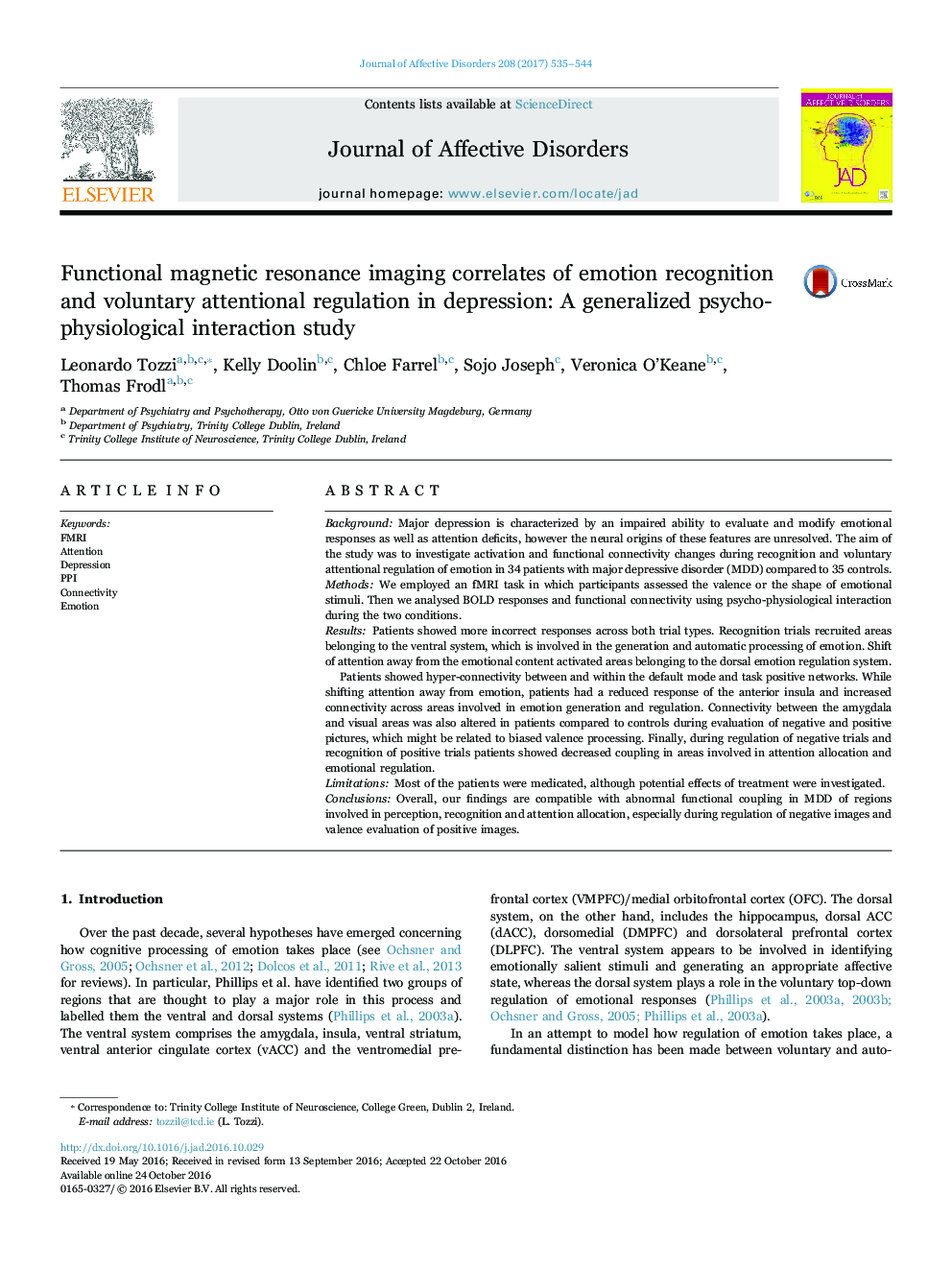| Article ID | Journal | Published Year | Pages | File Type |
|---|---|---|---|---|
| 5722124 | Journal of Affective Disorders | 2017 | 10 Pages |
â¢Depressed patients displayed impaired recognition and voluntary regulation of emotion.â¢Across both conditions, they showed hyper-connectivity between and within the default mode and task positive network.â¢During regulation they had less anterior insula response and greater coupling of emotion generation and control areas.â¢Connectivity between the amygdala and visual areas was altered during evaluation of negative and positive pictures.â¢Regulating negative and judging positive pictures they showed less coupling in attentional and emotional regulation areas.
BackgroundMajor depression is characterized by an impaired ability to evaluate and modify emotional responses as well as attention deficits, however the neural origins of these features are unresolved. The aim of the study was to investigate activation and functional connectivity changes during recognition and voluntary attentional regulation of emotion in 34 patients with major depressive disorder (MDD) compared to 35 controls.MethodsWe employed an fMRI task in which participants assessed the valence or the shape of emotional stimuli. Then we analysed BOLD responses and functional connectivity using psycho-physiological interaction during the two conditions.ResultsPatients showed more incorrect responses across both trial types. Recognition trials recruited areas belonging to the ventral system, which is involved in the generation and automatic processing of emotion. Shift of attention away from the emotional content activated areas belonging to the dorsal emotion regulation system.Patients showed hyper-connectivity between and within the default mode and task positive networks. While shifting attention away from emotion, patients had a reduced response of the anterior insula and increased connectivity across areas involved in emotion generation and regulation. Connectivity between the amygdala and visual areas was also altered in patients compared to controls during evaluation of negative and positive pictures, which might be related to biased valence processing. Finally, during regulation of negative trials and recognition of positive trials patients showed decreased coupling in areas involved in attention allocation and emotional regulation.LimitationsMost of the patients were medicated, although potential effects of treatment were investigated.ConclusionsOverall, our findings are compatible with abnormal functional coupling in MDD of regions involved in perception, recognition and attention allocation, especially during regulation of negative images and valence evaluation of positive images.
